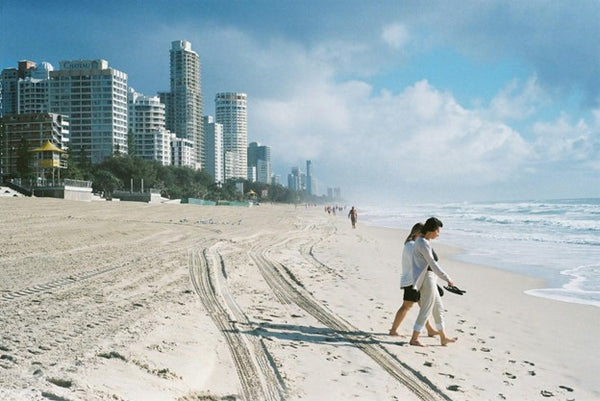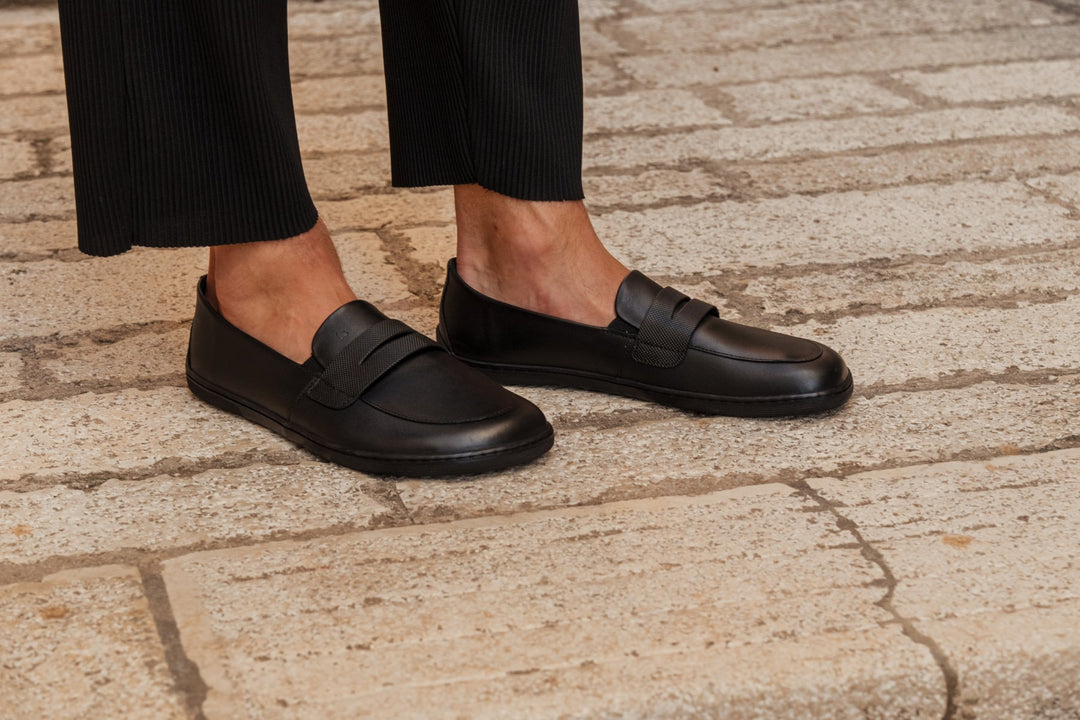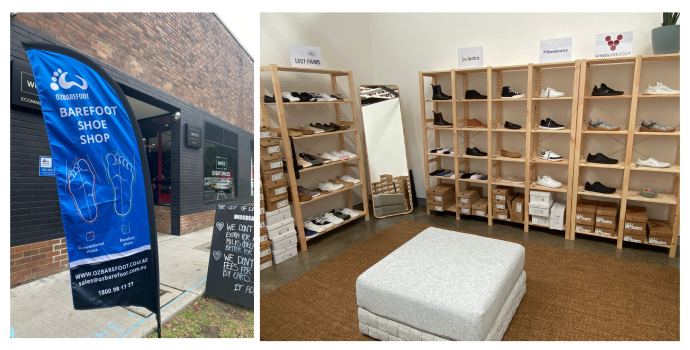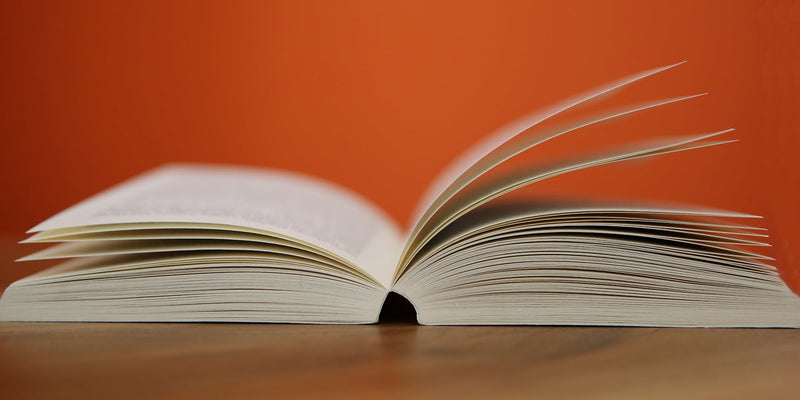The barefoot shoe revolution has arrived! More and more people are discovering the incredible health benefits of minimalist shoes, and there's never been more trendy barefoot shoe styles available.
We think this recent wave of barefoot shoe enthusiasm is worth celebrating, but it should come alongside a healthy dose of common sense. No matter how eager you are to delve into the lifestyle, beginners should never attempt a full transition to barefoot shoes overnight.
Rushing the process can result in muscle strain, foot pain, blisters, and other foot injuries (1). Not to mention, barefoot shoes aren't suitable for everyone. If you have chronic foot pain or pre-existing conditions, it's always a good idea to check in with a podiatrist or other suitable healthcare practitioner before making the switch.
If you have generally healthy feet or the go-ahead from a foot expert, here's how you can make the transition to barefoot shoes seamless.
Step 1: Assess if Barefoot Shoes Will Work for Your Lifestyle
Barefoot shoes can be worn in almost any environment, but there are a few exceptions:
- Workplaces with environmental hazards are one place where you may need to leave your barefoot shoes at home for safety reasons.
- Certain activities such as rock climbing, horseback riding, cycling and more also require special footwear not available in the form of barefoot shoes.
These specific circumstances aside, you can wear barefoot shoes practically anywhere. Whether you live in a hot or cold climate, need formal or casual shoes, and no matter your personal style; there are barefoot shoes for that.
Even if you only plan on wearing barefoot shoes for certain activities (such as at the gym or hiking), you can reap many benefits from being a part-time barefoot shoe wearer.
Step 2: Work on Foot Strength + Mobility
Whether or not you end up transitioning to barefoot shoes, working on foot strength and mobility is something we should all be doing for better foot health.
As physical therapist and author Jay Dicharry so aptly states: "Feet are the foundation of our strength". Weak feet can decrease athlete performance and leave us more prone to injury (2).
Minimalist shoes can help strengthen feet since they require our feet to engage many muscles and move through a larger range of movement than regular shoes, but it might it may be an overly taxing method to start with for some people (3).
That's why at-home foot strength and mobility exercises are a gentle way to improve foot health and prepare for barefoot shoe use (4).
A few simple strength and mobility exercises to try are:
- Toe Spreading - Spread toes apart and relax them back together.
- Ankle Circles - Rotate your ankle in a circle with the foot lifted. Move through the full range of motion and do both directions.
- Arch Strengthening Towel Exercise - Lay a towel flat under your feet while sitting down and practice scrunching the towel towards you using just your toes.
- Calf Raises - Stand with feet flat on the floor, then use the calf muscles to lift the heels and repeat.
- Massage and Myofascial Release - Manually massage your feet to release tension, or gently roll them over a tennis ball, massage ball, or foot roller.
- Walking Barefoot - Practice walking with no shoes at all in safe environments.

Did you know that walking outside barefoot has been shown to have anti-inflammatory effects on the body? It can potentially reduce pain and improve immune function. (5)
Step 3 - Select Your First Pair of Barefoot Shoes
Once you're ready to test the barefoot shoe waters, you'll need to find your first pair. Your perfect pair of barefoot shoes should:
- match your foot shape,
- suit the intended wearing purposes,
- and of course, be aligned with your style preferences.
There are barefoot shoes specially designed for:
- running,
- hiking,
- or sports as well as models well equipped for casual daily wear.
Barefoot shoes also come in a range of materials such as canvas and mesh as the most lightweight options, and leather (or vegan leather) on the other end of the spectrum.
Not everyone is ready for ultra-thin soles right away. If you prefer a gentler start, Be Lenka Recovery Shoes offer smart cushioning and thermoregulation while still allowing natural foot movement — a great bridge between regular and fully barefoot shoes.
You could try a thicker sole at first

One of the most popular casual wear barefoot shoes is the Zing model by Barebarics. Its subtle features make it almost indistinguishable from regular street-style shoes, and its slightly thicker sole makes it an ideal option for barefoot shoe beginners.
A thicker sole provides more cushion against hard surfaces like concrete sidewalks, so it can even be a great option for experienced barefoot shoe wearers in a city environment.
Step 4 - Introduce Barefoot Shoes Gradually
Even if you pick out a perfect pair of barefoot shoes, you'll still need time to adjust to them. Breaking in shoes is a common experience for any type of footwear, but with barefoot shoes, the breaking-in has less to do with the shoes and more to do with your feet.
This is why starting slowly is essential. You can practice wearing your new shoes for short periods to develop strength and mobility, even if it's just around your house. For the first little while of wearing barefoot shoes out of the house, it may even be a good idea to pack a pair of backup shoes you're more accustomed to in case you need a break.
Did you know the average person will take millions of steps in their lifetime? That puts into perspective just how important a pair of high-quality shoes can be!
Step 5 - Enjoy Your New-found Foot Freedom
Eventually, you'll be able to wear your barefoot shoes all day without your feet getting tired. At this stage, you can enjoy the freedom of wearing the most comfortable shoes around, all while reaping the benefits of having strong and healthy feet.
It's always important to monitor how your feet feel even at this stage. Changes to daily activities, exercise habits, health and more can still require us to adjust our footwear habits, regardless of where you're at with your barefoot shoe journey.
A general rule of thumb is that sharp pain is always a concern worth getting checked out, whereas sore muscles generally just require rest, recovery and perhaps a massage.
Conclusion
Most good things take time, and adapting a barefoot shoe lifestyle is no different. Thankfully, with just a little bit of intention and patience, you'll soon be stepping with confidence in your barefoot shoes.
Article Sources
- Cristine Agresta. (2018). Immediate and short-term adaptations to maximalist and minimalist running shoes. Footwear Science.
- Peter Briggs. (2005). The structure and function of the foot in relation to injury. Current Orthopaedics.
- Sarah T Ridge. (2019). Walking in Minimalist Shoes Is Effective for Strengthening Foot Muscles. Medicine & Science in Sports & Exercise.
- Abbis H. Jaffri. (2023). Evidence for Intrinsic Foot Muscle Training in Improving Foot Function: A Systematic Review and Meta-Analysis. Journal of Athletic Training.
- James L Oschman. (2015). The effects of grounding (earthing) on inflammation, the immune response, wound healing, and prevention and treatment of chronic inflammatory and autoimmune diseases. Journal of Inflammation Research.











